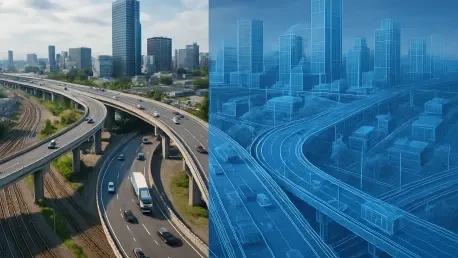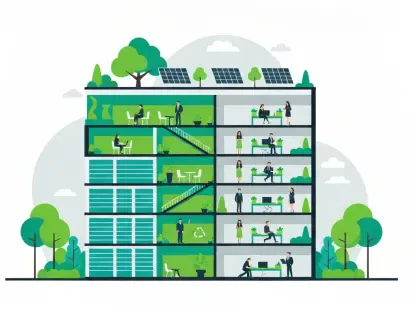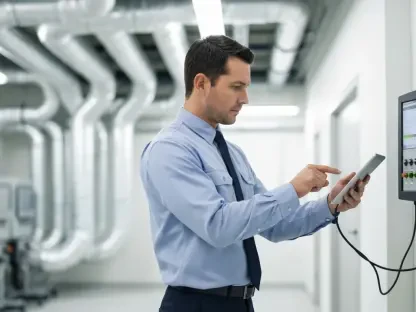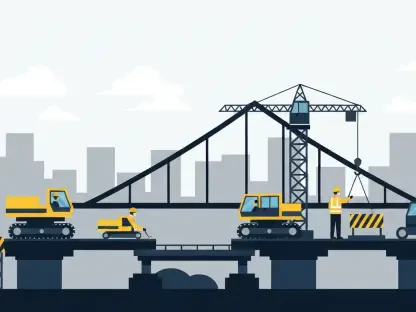Imagine a sprawling highway project that could transform a region’s connectivity but faces skepticism from local communities and government officials due to its complexity and cost. How can planners bridge the gap between intricate technical designs and public understanding to ensure support and funding? Digital twins, virtual replicas of physical infrastructure, offer a groundbreaking solution by providing clear visualizations and data-driven insights. This best practices guide explores how this technology is reshaping transportation projects, addressing challenges in planning, execution, and maintenance. By diving into real-world applications and expert recommendations, the guide aims to equip project managers and stakeholders with actionable strategies to leverage digital twins for smarter, more efficient outcomes.
Understanding Digital Twins in Transportation Infrastructure
Digital twins represent a transformative approach to managing transportation infrastructure by creating virtual models that mirror real-world assets like bridges, roads, and transit systems. These models integrate vast amounts of data, from design blueprints to real-time sensor inputs, enabling a comprehensive view of a project’s lifecycle. Their adoption is crucial in an era where urbanization and aging infrastructure demand innovative solutions to keep projects on track and within budget.
The technology addresses critical pain points in transportation development, such as miscommunication among stakeholders, costly design errors, and inefficient maintenance practices. By simulating scenarios before construction begins, digital twins help anticipate problems and optimize resources. This guide will cover key areas where digital twins make an impact: enhancing public engagement, preventing costly mistakes, supporting long-term asset management, and showcasing practical examples of their application.
Ultimately, embracing digital twins is not just about keeping up with technological trends but about fundamentally improving how infrastructure projects are conceived and delivered. Their ability to centralize data and provide actionable insights makes them indispensable for modern transportation initiatives. The following sections will break down specific best practices to maximize their potential across various project phases.
Why Digital Twins Matter for Modern Infrastructure Challenges
Transportation projects today grapple with unprecedented complexity, from navigating dense urban environments to meeting stringent sustainability goals. Digital twins stand out as essential tools to tackle these issues by offering a unified platform for data integration and visualization. They enable project teams to simulate outcomes, identify risks, and make informed decisions well before breaking ground.
Among the standout benefits is improved communication with stakeholders, ensuring that everyone from engineers to policymakers grasps the scope and impact of proposed changes. Additionally, digital twins contribute to significant cost savings by reducing design errors and minimizing delays during construction. They also enhance safety by identifying potential hazards in a virtual environment and promote sustainable asset management by extending the lifespan of infrastructure through proactive monitoring.
Their role in fostering collaboration cannot be overstated, as they break down silos between agencies and disciplines, creating a shared understanding of project goals. As transportation systems grow more interconnected, the need for such a holistic approach becomes even more pressing. Adopting digital twins positions organizations to address current challenges while preparing for future demands with greater confidence.
Best Practices for Applying Digital Twins in Transportation Projects
Building Public and Stakeholder Buy-In
One of the most powerful applications of digital twins lies in their ability to translate complex infrastructure plans into accessible visual representations. For communities and officials who may lack technical expertise, these models provide a tangible way to see how a project will unfold, from new roadways to transit hubs. This transparency is vital for gaining trust and securing approvals in projects that impact daily life.
By presenting realistic simulations, digital twins help demystify intricate designs and demonstrate benefits like reduced traffic congestion or improved safety. This approach not only educates but also fosters dialogue, allowing stakeholders to voice concerns and suggest modifications early in the process. As a result, opposition can be mitigated before it derails progress, ensuring smoother project timelines.
A notable example is the Interstate 95 reconstruction in Fredericksburg, Virginia, where a digital twin was used to visualize lane additions and a new bridge over the Rappahannock River. The model served as a communication tool, helping government bodies and the public understand the proposed changes. Such applications highlight how digital twins can turn abstract concepts into concrete discussions, building consensus around transformative infrastructure.
Preventing Design Errors and Streamlining Coordination
Another critical best practice is utilizing digital twins to integrate diverse data sets, such as geographic, topographic, and subsurface information, into a single cohesive model. This comprehensive view allows planners to spot potential conflicts or errors in design long before construction starts, saving time and resources. It also reduces the likelihood of budget overruns that often plague large-scale projects due to unforeseen issues.
Collaboration is further enhanced as digital twins provide a centralized platform for multiple agencies and teams to review and refine plans. This minimizes miscommunication and ensures that all parties are aligned on project specifications. The technology acts as a safeguard against delays by enabling iterative testing of design choices in a risk-free virtual space.
A compelling case is the East 138th Street Bridge replacement in the Bronx, New York, where a digital twin doubled as both a public outreach tool and a primary contract document. Over 180 reviewers from 15 agencies collaborated on a 3D model to address challenges like traffic flow and structural integrity. This example underscores how digital twins streamline coordination, ensuring that complex projects are executed with precision and efficiency.
Supporting Long-Term Monitoring and Maintenance
Digital twins extend their value far beyond the construction phase by serving as dynamic tools for ongoing asset management. By incorporating real-time data from sensors and regular inspection reports, these models provide a continuous snapshot of infrastructure health. This capability allows for early detection of issues, preventing minor problems from escalating into major failures.
Their role in enhancing safety and sustainability is particularly significant, as they enable proactive maintenance strategies that extend the lifespan of critical assets like bridges and highways. Instead of reacting to breakdowns, agencies can schedule repairs based on data-driven insights, optimizing resource allocation. This forward-thinking approach aligns with the growing emphasis on resilient infrastructure in the face of climate change and urbanization.
Bibhuti Aryal, Senior Director of Transportation at Bentley Systems, likens infrastructure to a living organism, emphasizing that digital twins track performance over time much like a health monitor. This perspective highlights the importance of viewing assets as evolving entities that require consistent care. Implementing digital twins for long-term monitoring ensures that transportation networks remain safe and functional for years to come.
Looking Ahead with Digital Twins and Adoption Strategies
As digital twins continue to gain traction in the transportation and construction sectors, their importance for managing megaprojects with high complexity and stakeholder involvement becomes increasingly clear. These tools offer a versatile framework for addressing diverse needs, from initial planning to decades-long maintenance. Their adaptability makes them suitable for projects of varying scales, though their impact is most pronounced in large, intricate initiatives.
For organizations new to this technology, a practical starting point is to pilot digital twins on smaller projects to build familiarity with data management and validation processes. This phased approach, as recommended by Bibhuti Aryal, allows teams to refine workflows and address integration challenges before tackling more ambitious endeavors. Project managers of large-scale infrastructure stand to gain the most, as digital twins provide clarity and control over multifaceted variables.
Key considerations before adoption include ensuring robust data governance and verifying the accuracy of inputs to maintain the reliability of virtual models. Investing in training and partnerships with technology providers can also smooth the transition. By taking these steps, organizations can harness the full potential of digital twins, paving the way for more efficient, sustainable transportation projects in the years ahead.









